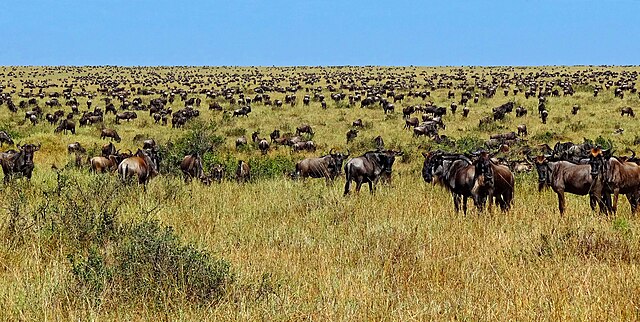Great Green Wall (Africa)
The Great Green Wall or Great Green Wall of the Sahara and the Sahel is a project adopted by the African Union in 2007, initially conceived as a way to combat desertification in the Sahel region and hold back expansion of the Sahara desert, by planting a wall of trees stretching across the entire Sahel from Djibouti, Djibouti to Dakar, Senegal. The original dimensions of the "wall" were to be 15 km wide and 7,775 km long, but the program expanded to encompass nations in both northern and western Africa. The concept evolved into promoting water harvesting techniques, greenery protection and improving indigenous land use techniques, aimed at creating a mosaic of green and productive landscapes across North Africa. Later it adopted the view that desert boundaries change based on rainfall variations.
Logo of the Great Green Wall initiative, showing participating countries and a representation of the area in focus
Satellite photo of the Sahara
Desertification is a type of gradual land degradation of fertile land into arid desert due to a combination of natural processes and human activities. This spread of arid areas is caused by a variety of factors, such as overexploitation of soil as a result of human activity and the effects of climate change. Geographic areas most affected are located in Africa, Asia and parts of South America. Drylands occupy approximately 40–41% of Earth's land area and are home to more than 2 billion people. Effects of desertification include sand and dust storms, food insecurity, and poverty.
Goats inside of a pen in Norte Chico, Chile. Overgrazing of drylands by poorly managed traditional herding is one of the primary causes of desertification.
Wildebeest in Masai Mara during the Great Migration. Overgrazing is not necessarily caused by nomadic grazers in large travelling herd populations.
A shepherd guiding his sheep through the high desert outside Marrakech, Morocco
View of Sydney Harbour Bridge covered in dust






